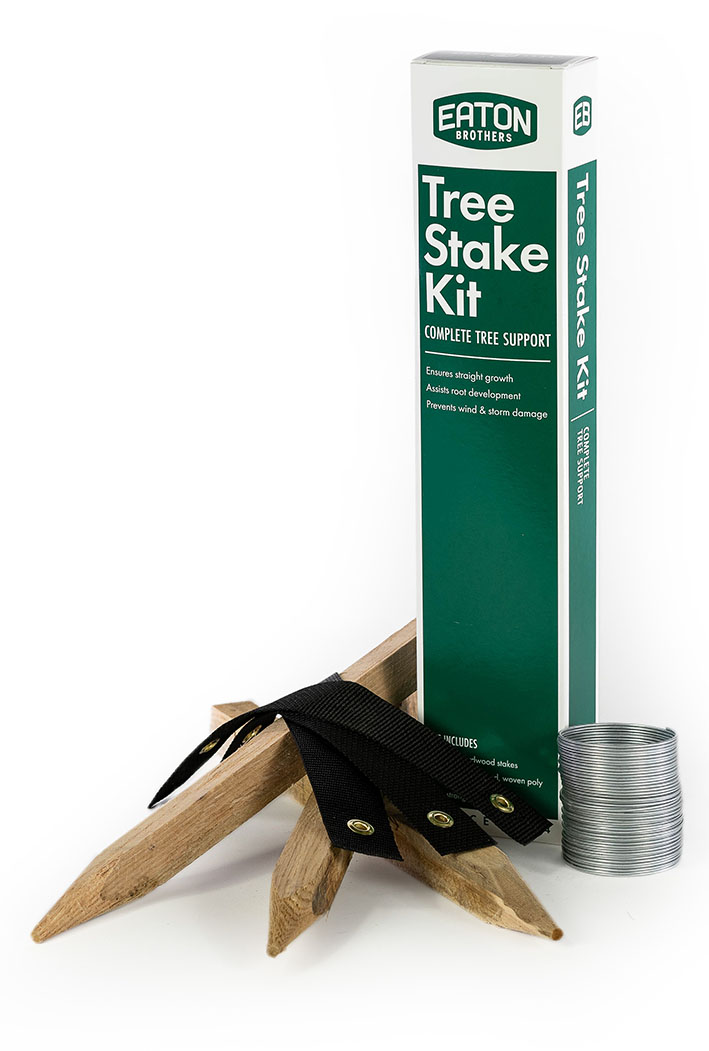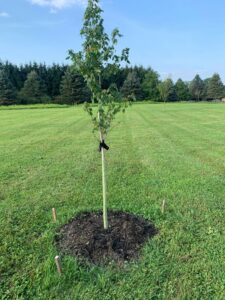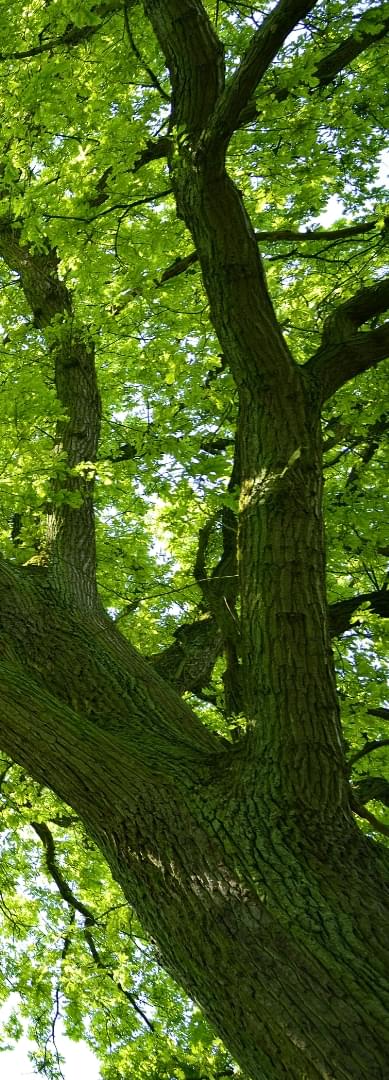


While many trees do fine without it, there are scenarios where staking is more recommended, including:
- Bare-root trees or trees with a small root ball
- New trees that can’t stand tall on their own, or are leaning
- Trees planted in areas with high foot traffic
- Top-heavy trees with no lower branches
- Trees in open, windy areas
A tree stake kit can ensure you have the tools you need to support strong growth in a variety of conditions. The Eaton Brothers Tree Stake Kit includes three notched, pointed hardwood stakes, 3 – 10” polystraps, and 30’ of galvanized wire.
Here is how you rightly install it:
Step 1 – Determine the Number of Stakes Needed
The number of stakes is determined by the size of the tree. A tree with a trunk 3 inches or less in diameter needs only one stake, which should be placed on the windward side. Larger trees should be staked with three stakes in a triangle shape with the “point” in the direction of the prevailing wind. A tree stake kit typically comes with at least three stakes.
Step 2 – Drive the Stakes
Place each stake roughly one and a half feet away from the trunk (avoiding the root ball). Drive each stake at a slight angle, make sure to leave enough height to tie the support straps. In high traffic areas, stakes should be visible enough to prevent tripping.
Step 3 – Tie the Supports
Cut the wire supplied in your tree stake kit into three equal lengths. Loop each strap around the trunk of the tree or a lower branch. Fasten the end of a wire through the eyes of the strap. Run a wire to each stake, wrap it around the notch and secure it. The wire should be loose enough to let the tree flex and grow. Mark your wires with streamers for visibility and safety.


Step 4 – Monitor It Regularly
When the tree is staked, keep an eye for any signs of abrasion, girdling, rocking or other damage. If these issues occur, please remove the supports and staking.
Step 5 – Untie in a Timely Fashion
You should only be staking a tree for one growing season. After that, it should stand on its own. If you plant and stake a tree in spring, remove the stake in the fall, and vice versa. You should avoid staking a tree then forgetting about it.
After removing the straps, you can leave the stakes as protection for foot traffic and lawn equipment, if you’d like.
Proper tree staking can protect a newly planted tree and help it get better established. If your tree is a good candidate for staking, enjoy the convenience of a tree stake kit from Eaton Brothers!



